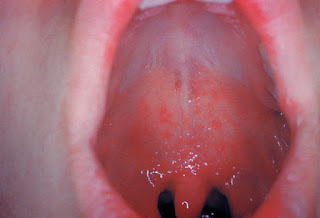Breastfeeding: Benefits, Technique, and Contraindications
Breastfeeding is the practice of feeding an infant with milk from a mother's breast. It is recommended as the optimal form of infant feeding by major health organizations, including the World Health Organization (WHO) and the American Academy of Pediatrics (AAP). Breast milk contains all the necessary nutrients and antibodies that a newborn need to grow and develop.
Breastfeeding has numerous health benefits for both the mother and the infant. For the infant, breast milk can reduce the risk of infections, such as respiratory and gastrointestinal infections, and can also lower the risk of sudden infant death syndrome (SIDS), allergies, and obesity. For the mother, breastfeeding can reduce the risk of breast and ovarian cancer, as well as postpartum depression.
Breastfeeding is a natural process, but it can also be challenging for some mothers. Some common challenges include sore nipples, engorgement, and difficulty with latching. Mothers may also face social and cultural barriers to breastfeeding, such as lack of support, discrimination, or pressure to use formula.
To promote and support breastfeeding, healthcare providers
can educate mothers on the benefits of breastfeeding and provide them with
information and resources to help them overcome common challenges. This may
include providing guidance on proper positioning and latch, encouraging
skin-to-skin contact, and offering support groups or lactation consultants.
Benefits of Breastfeeding for Both the Mother and Baby
Breastfeeding is a natural and healthy way to feed a baby, providing a range of benefits for both the mother and baby. Breast milk is rich in nutrients, antibodies, and enzymes that help protect and support the developing baby's immune system, digestive system, and overall health.
Benefits for the Baby:
- Provides Optimal Nutrition: Breast milk is the perfect nutrition for a growing baby, containing all the essential nutrients that a baby needs for growth and development.
- Reduces the Risk of Infections: Breast milk is rich in antibodies and immune cells that help protect the baby from infections, such as respiratory and gastrointestinal infections, and reduces the risk of sudden infant death syndrome (SIDS).
- Promotes Healthy Growth and Development: Breastfeeding has been shown to promote healthy growth and development, reduce the risk of obesity, and enhance brain development.
- Reduces the Risk of Allergies: Breast milk contains immunoglobulins that help prevent allergies in babies.
- Helps Develop a Strong Bond: Breastfeeding promotes skin-to-skin contact, which helps develop a strong bond between the mother and baby.
Benefits for the mother:
- Promotes Faster Recovery: Breastfeeding helps the uterus contract and return to its pre-pregnancy size more quickly, reducing the risk of postpartum bleeding and infection.
- Reduces the Risk of Breast and Ovarian Cancer: Breastfeeding has been shown to reduce the risk of breast and ovarian cancer in women.
- Helps with Weight Loss: Breastfeeding can help mothers lose weight gained during pregnancy by burning calories.
- Promotes Emotional Well-Being: Breastfeeding can promote emotional well-being by releasing oxytocin, which helps reduce stress and promote relaxation.
- Saves Money: Breastfeeding is cost-effective and can save money compared to formula feeding.
Breastfeeding contraindications or precautions:
Breastfeeding is generally recommended as the optimal form of infant feeding,
but there are some absolute and relative contraindications that may impact a
mother's ability to breastfeed safely. Absolute contraindications are
conditions that absolutely prevent a mother from breastfeeding, while relative
contraindications are conditions that may require special considerations or
precautions.
Breastfeeding Absolute Contraindications:
HIV: Mothers with HIV are advised not to breastfeed due to
the risk of transmitting the virus to the baby through breast milk.
Active Tuberculosis: Mothers with active tuberculosis are
advised not to breastfeed until they have completed treatment and are no longer
infectious.
Herpes Simplex Virus (HSV) on the breast: If a mother has
active HSV sores on the breast, she should avoid breastfeeding on that breast
until the sores have healed.
Galactosemia: Infants with galactosemia are unable to
metabolize galactose, a sugar found in breast milk and formula, so mothers with
this condition should not breastfeed.
Certain Medications: Some medications are not safe to take
while breastfeeding, so mothers should consult with their healthcare provider
to determine if the medications they are taking are safe.
Breastfeeding Relative Contraindications:
- Maternal Illness: Mothers with certain illnesses, such as untreated active tuberculosis, hepatitis B or C, or severe malnutrition, may need to take special precautions when breastfeeding.
- Maternal Medications: Some medications are safe to take while breastfeeding, but they may require special considerations, such as timing of medication administration or monitoring for side effects.
- Substance Abuse: Mothers who abuse drugs or alcohol may need to avoid breastfeeding or take special precautions to ensure the safety of the baby.
- Infant Allergies: If an infant has a severe allergy to a protein in breast milk, such as cow's milk protein, the mother may need to avoid consuming that protein or switch to a hypoallergenic formula.
- Breastfeeding difficulties: Some mothers may experience breastfeeding difficulties such as low milk supply, sore nipples, or difficulty with latching, which may require special considerations or support.
While breastfeeding is generally recommended as the optimal form of infant feeding, there are some absolute and relative contraindications that may impact a mother's ability to breastfeed safely. Mothers with medical conditions or taking medications should consult with their healthcare provider to determine if breastfeeding is safe for them and their baby, and if any special precautions or considerations are necessary.
Some Tips for Proper Breastfeeding Technique:
Breastfeeding
is a natural process, but it can take some practice to find a comfortable and
effective technique for both the mother and baby.
- Positioning: Choose a comfortable position for both you and your baby. You can try sitting upright in a chair with your back supported or lying down on your side with your baby next to you. Make sure your baby is facing your breast with their head, shoulders, and hips aligned.
- Latching: To start the breastfeeding process, support your breast with your hand and bring your baby's mouth to your nipple. Wait for your baby to open their mouth wide and bring them to your breast, making sure their mouth covers as much of the areola (the darker area around the nipple) as possible.
- Support: Make sure your baby is well-supported and comfortable while feeding. Use pillows or cushions to support your baby's head and body, and ensure that their nose and chin are not pressed against your breast.
- Milk Flow: As your baby starts to suckle, you may notice a tingling sensation or a feeling of let-down as your milk starts to flow. If your baby is not able to suckle effectively, try gently massaging your breast or expressing a little milk by hand to help stimulate milk flow.
- Swallowing: Listen for your baby's swallowing sounds, which indicate that they are taking in milk. You should be able to see your baby's ears wiggle slightly as they swallow.
- Burping: After feeding, hold your baby upright and gently pat their back to help them burp. This can help release any air trapped in their stomach and prevent discomfort.
- Duration: Allow your baby to feed for as long as they need, typically 10-20 minutes per breast. Don't worry about keeping to a strict schedule or timing the feedings, instead, follow your baby's cues and allow them to feed until they are satisfied.
Remember, breastfeeding is a learning process for both the
mother and baby, so don't hesitate to ask for help or support from a lactation
consultant or other healthcare professional if you encounter any difficulties.
With practice and patience, you and your baby can develop a comfortable and
effective breastfeeding technique.



Comments
Post a Comment